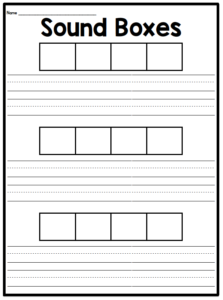Have you ever used sound boxes (also known as Elkonin Boxes) in your classroom? Basically, it’s a way to strengthen your students’ phonological awareness by segmenting words into individual sounds. This will help with both spelling and reading.
When using sound boxes, students will break a whole word into its individual sound parts (phonemes). This is called phoneme segmenting. They will count the number of sounds (phonemes) in the word, NOT letters. Each box represents one sound. That means that each box could have more than one letter.
For example, even though the word chair has 5 letters, it would use 3 sound boxes (ch-ai-r) because it has three sounds. The word shop has three boxes (for the sounds /sh/ /o/ /p/).

For a page with just sound boxes, click here. Put this page in a sheet protector so you can reuse it. This is perfect for small group instruction.

Before letters are introduced in kindergarten, you can use sound boxes without including letters. You would just use a manipulative of some kind to push in and out of the boxes. I use bingo chips usually, but then I also like to spice it up with little erasers. (For example, I’ll use pumpkin erasers in October and gingerbread in December.) Proficiency with this skill will set your students up for success with reading and spelling. Once your students know some letters, you will want to incorporate letters as soon as possible.
When I taught first grade, I made a Sound Box “journal” for my students each month. I used the spelling patterns that we are using in class. This also helps with developing long-term word recognition. Click here to read my post about orthographic mapping. Click here for a post about spelling.

After students segment the sounds in the word and write the letters in the boxes, they will write a sentence using that word. They are expected to use the rules of writing that we have learned up to that point (at the beginning that is just capitals, periods, spaces). Then I pass out colored pencils and we make sure the words in the sound boxes are spelled correctly. That way I have a whole packet of information to use when report cards come out. I can look back and see how well they sounded out the words and I can use their sentences as an assessment too. Also, if I see a group of kids (or even just one) that are struggling with sound boxes, I know that I need to work more with them.
This is a great thing to keep in their portfolios because you will see major growth with both spelling and sentence writing.
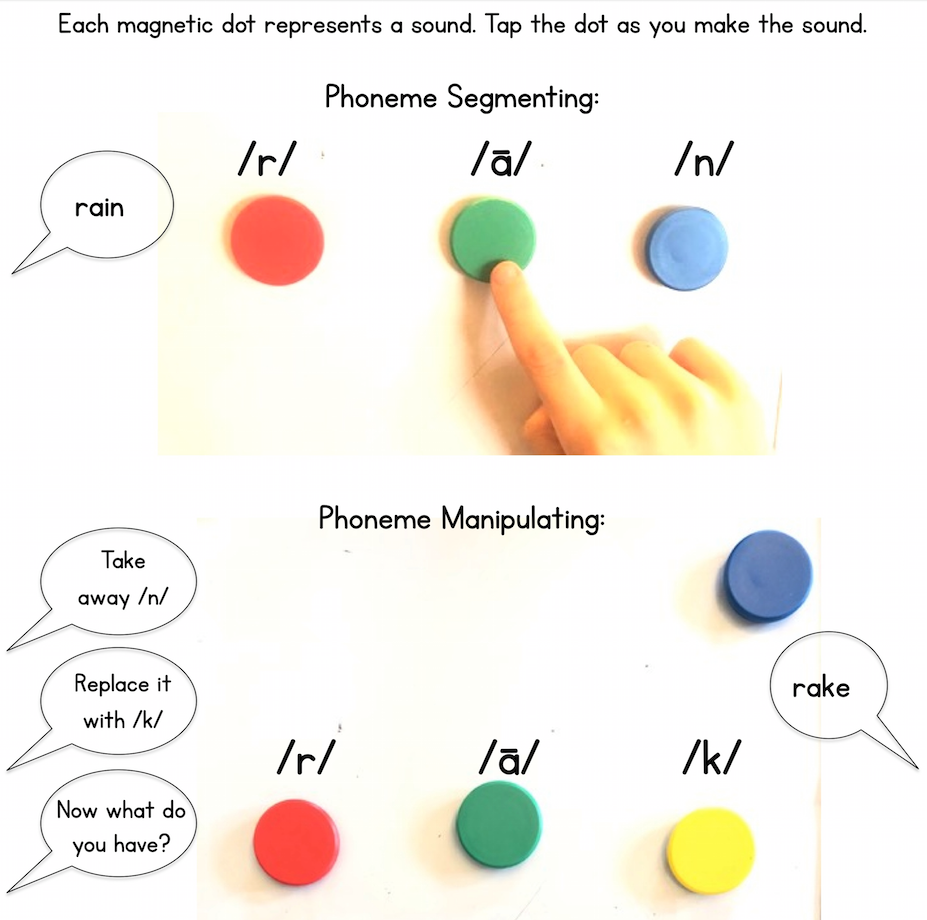
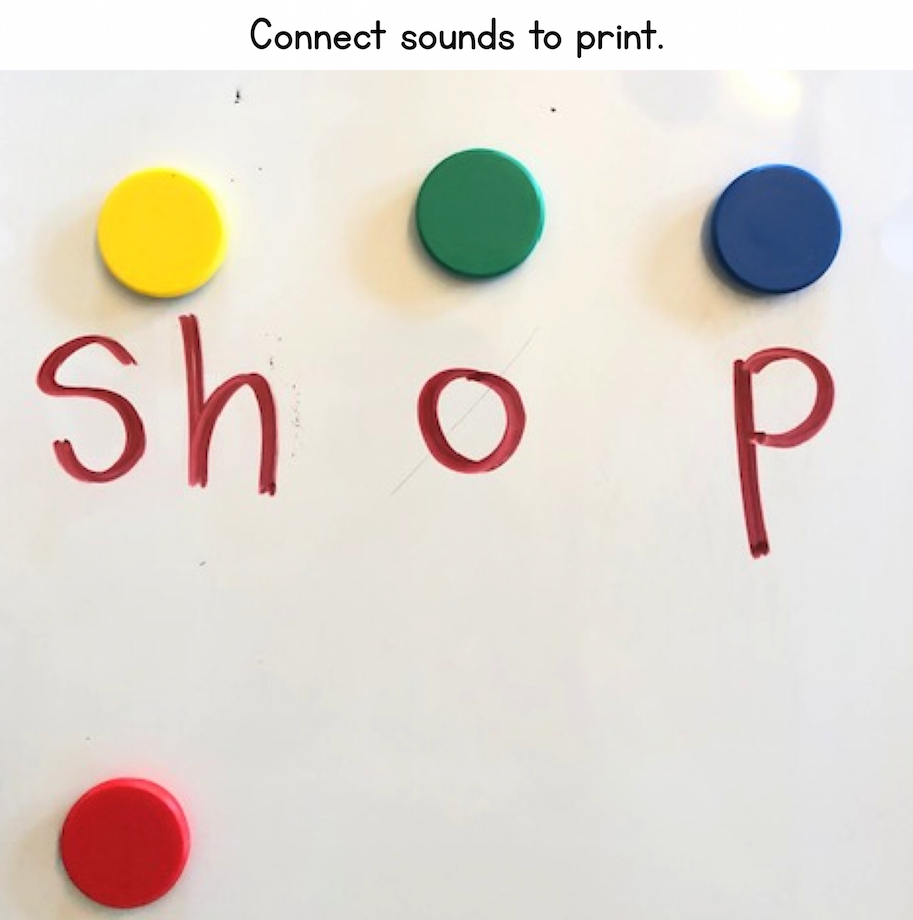


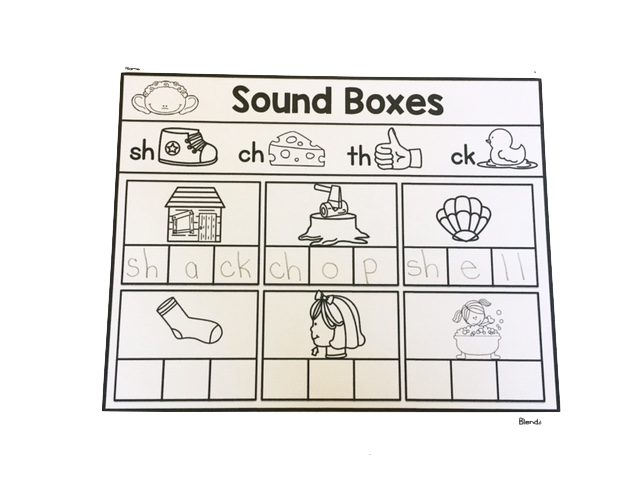

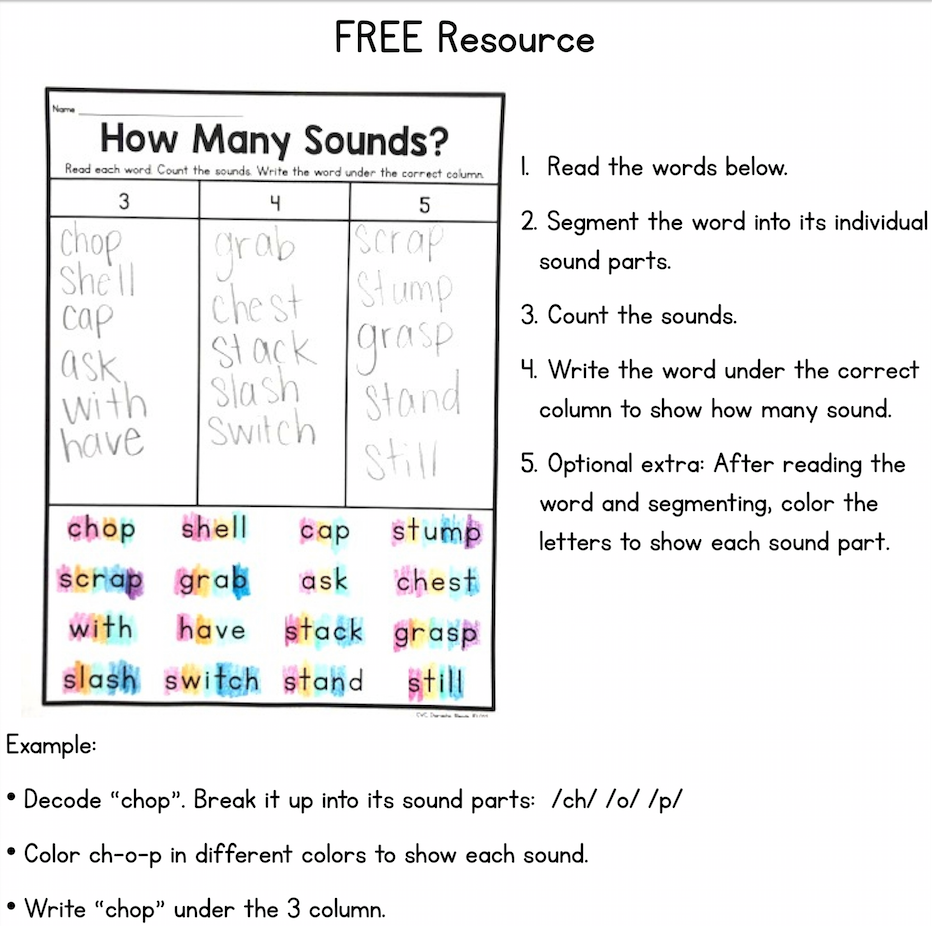
Want to learn more about phonemic awareness? Click here and here for two long blog posts about phonemic awareness.
